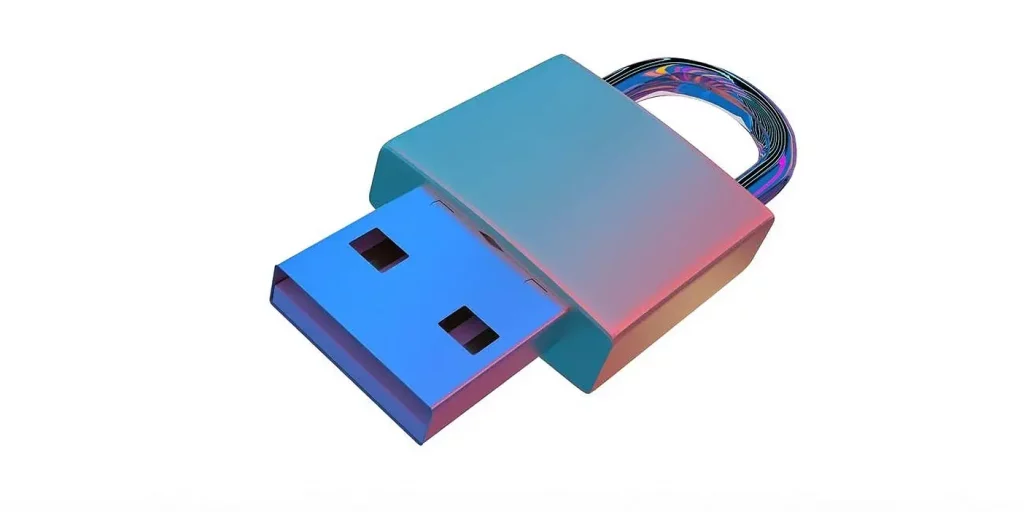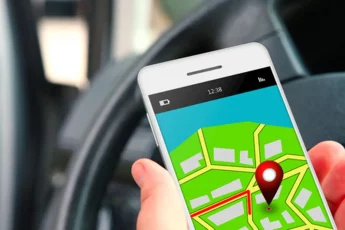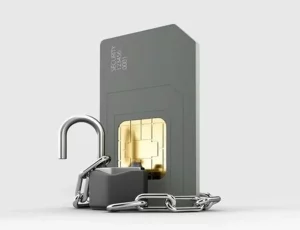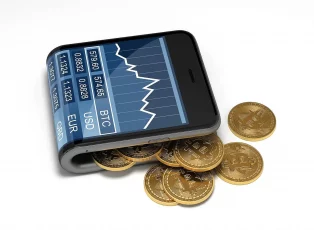If you are taking your first steps into the cryptocurrency ocean, you must learn about choosing a secure “cold wallet” or hardware wallet. Do you know the type? Those things that look like USB sticks but are not?
But what are those things, anyway? And why are they all the rage for crypto investors suddenly? Are they really that safe?
This article will tell you what these hardware wallets are, how they keep your digital assets safe, and how to pick the one that will suit you best.
So let’s begin with the basics.
Cryptocurrency wallets 101
Although, most crypto enthusiasts often recommend using a hardware cryptocurrency wallet. However, for new cryptonauts, choosing the right wallet, especially a bulky hardware gadget, sounds weird, particularly when plenty of alternatives are available. So, to help you understand better here’s a quick breakdown of the different categories of cryptocurrency wallets.
Web wallets
These wallets are available through a web browser. They are usually a service provided by a third party, such as a cryptocurrency exchange. All you need to have is an account as a web wallet user. No software downloads or clients can save a lot of time and energy. However, the user’s assets are stored in a third party’s vault, and such websites can (and have been) compromised. The result can be the total loss of the cryptocurrency. The best use for web wallets is to keep a small number of tokens you use for frequent transactions. But this is not a type of wallet in which you should keep a large number of tokens or any amount for an extended period.
Desktop wallets
Desktop wallets are software you install on your desktop computer to store your private keys on your hard drive. They are safer than web wallets because you don’t need somebody else’s server to keep your assets. But whenever the computer in question goes online, it becomes hot storage, which means there’s a risk.
Desktop wallets are more versatile and autonomic than their web counterparts. But, long-term storage needs other means of storage, especially in large amounts.
Mobile wallets
These are the portable alternatives for crypto investors on the go. In addition, they allow settling micropayments quickly. They are easy to use and usually include all the essential functions you expect from a wallet. So these are good options for all users, from beginners to the more experienced.
Convenience is the main feature in mobile wallets, of course. But their portability makes them easier to misplace or lose than their desktop cousins. So the best approach to mobile wallets is to consider them your purse for digital pocket money and nothing else.
Paper wallets
Paper wallets are cold storage wallets. The wallet is nothing but a piece of cardboard (or metal, wood, anything you can have printed) in which the private and public encryption keys are written or painted. Cold storage doesn’t get any harder than paper wallets, as nothing is less digital than a piece of cardboard. Deploying your coins for a transaction needs typing out every key character by character. Nothing is as immune to hackers as a paper wallet, so they are safe. However, if your little piece of paper goes missing or the ink fades out, they will take away your coins with them.
Hardware wallets
These are hardware devices designed to store your private keys safely so that they can be hot or cold, depending on your preference.
The hardware wallet is practically immune to other wallets’ risks because of being on the internet. Indeed, your main worry with this type of wallet is physical theft. But even in that unfortunate situation, the PIN code will enable you to rescue all your assets if you react quickly enough to the robbery.
Hardware wallets: What are they?

A hardware cryptocurrency wallet is a device that can store your private keys and sign your cryptocurrency transactions.
The cryptocurrency blockchains that keep a given token status within the network know of no usernames or passwords. Your ownership of a digital coin relies on your ability to encrypt a message with a specific private key.
And what is a private key, I hear you ask? It’s a string of characters created as you set up a cryptocurrency wallet for the first time. Each private key is associated with a crypto address. Each address, in turn, allows access only with this private key.
Computers were the only storage media for private keys during crypto’s early days. Then smartphones came along. And if your crypto savings were modest, there was nothing wrong with that. But if you were a large holder, you needed something safer.
Many cryptonauts grew worried that their computers could get a malware infection and that one of the consequences would be the loss of their virtual capital.
And that’s how hardware wallets came into existence. They provide a physical place to store your private key, not your computer or phone, that can remain offline and safe from digital threats. So if your computer has any problem, your private key remains available to you in another piece of hardware. Also, it remains offline, far away from hackers –because software wallets are vulnerable to hackers and attacks.
Any digital thief can’t even try to steal your cryptocurrency this way, as they would have to steal the physical device itself.
So the physical wallet is like a digital safe that keeps your cryptocurrency off the internet, preventing the dangers surrounding it.
How do hardware wallets work?
A hardware wallet has no wifi or ethernet connectors. So you can’t get them online directly or on their own, which is why they are safe in the first place. They are safe from the rest of the internet as long as they are offline.
Setting up your physical wallet for the first time will give you a list of “backup seed words.” The words in question will be a tool for you to use in your private key recovery if something goes wrong with your wallet. These words are to be kept safe, as they will be your backup in an emergency.
Remember that there is no “forgot my password” option in a physical wallet. So you’re done if you don’t have the backup seed words. If that seems threatening to you, consider it is for your protection. An attacker is also helpless against your hardware wallet without the seed words.
When the time comes for you to perform a crypto operation with your hardware wallet, you get it online through your PC, smartphone, or a Bluetooth connection. Then the wallet produces a “signature,” which is something like a “blockchain receipt” created with your primary key. The signature then goes through your internet connection (PC or otherwise). But the key doesn’t go through it, only the message. Therefore, nobody can steal your digital assets unless they steal your wallet first.
And what if your wallet is stolen, indeed? It has a PIN code lock that should get in the way of an attacker’s activities once he has it. But this protective measure won’t last for long. If your hardware wallet becomes physically compromised, you must move quickly to recover all of your cryptocurrencies and put them elsewhere.
Hardware or physical wallets are also known as “cold wallets.” We are about to explain why.
Hot vs Cold wallets
Maybe you already came across the term “cold wallet” regarding hardware wallets. It refers to any private key stored in a device that remains offline, unconnected to the internet.
So physical wallets are cold wallets, but not the only type. Think about the piece of paper on which you wrote your seed words. That is a cold wallet as well, as long as no digital document on the internet includes those words.
Suppose that you store your crypto on a laptop. Moreover, suppose your computer is securely stored in a bank vault and constantly offline. That would be a cold wallet as well.
On the other hand, a “hot wallet” stores your private key on an online device. For example, you could use Metamask (a popular software) to generate a crypto address. Then the address in question is on your PC, which is connected to the internet constantly. In this case, your computer constitutes a “hot wallet.” And it’s hot because if a hacker gets to your PC, he could steal your private key. Of course, hot wallets have their advantages. For instance, it’s better to keep your digital assets in a hot wallet than in your online exchange. But cold wallets are even safer.
So, now that you know the basics about digital wallets, the next question is: how can you tell which physical wallet is best for you?
Choosing a hardware wallet
There are many physical wallets on the market. Consider the following features as you choose the one you want.
1. Screen quality and size
Some wallets have no screen at all. Others have screens that can be big, small, monochrome, etc. If you expect your wallet to be very active with transactions, a big color display would be the best option as it would improve your experience significantly.
2. Mobile features
Most of the hardware wallets in the market will work with the main desktop operating systems (Linux, Windows, and macOS). But mobile platforms are a different thing. Some wallets will work with Android, Some others with iOS. And many won’t work with both. So if you intend for your smartphone (or tablet) to play a central role in your cryptonautic experience, you need to pick the wallet that will work with your device.
A few wallets in the market include a Bluetooth feature. That simplifies significantly, as you don’t need to physically plug your wallet into your device whenever you want to use it.
3. Token compatibility
Different wallet models support other cryptocurrencies. Some can only store the most popular ones like Bitcoin on Ether. Some others can hold hundreds or even thousands of different tokens.
If your crypto plans do not include the specific currencies you plan to buy, you should pick the wallet that supports the most significant number of tokens. If you already have some coins in other hot wallets or exchanges, select a wallet that can store the ones you already have.
4. Price
Hardware wallets can cost anywhere from 40 USD to 700 USD. Obviously, price is a significant factor to consider. The most expensive ones tend to support more currencies, better screens, and Bluetooth features.
But do you need all those rings and bells? If you stick to Bitcoin exclusively, the cheapest one will do the trick perfectly. So it would be best to consider what you will do with a new wallet and assess the costs and benefits.
Are hardware wallets safe?
So are these hardware wallets really so much safer than all the other options? Are they not just the latest gadgets to exploit increased interest in Bitcoin?
Ok, so let us tell you the truth about cold hardware wallets: They are exceedingly safe. If you own a large number of cryptocurrency tokens, then you shouldn’t doubt that a physical wallet is the way to go. Regarding safety, the only way to compete with a hardware wallet is to use an institutional-grade vault, like Coinbase Custody.
But if your digital investments remain at the hobby level, then Coinbase Custody is not available to you. So the physical wallet is the best you can do.
However, have you ever heard that “in digital security, no solution is ever 100% safe”? It’s true. It applies to hardware wallets as well. A competent hacker can still attack a hardware wallet; we will tell you about that in the next section.
Risks to avoid while using hardware wallets
We repeatedly repeat that hardware wallets are the safest storage for your digital assets. But they are not absolutely invulnerable to everything. So it would be best if you still were careful about the two most common problems that can haunt you as a physical wallet owner.
1. Purchasing a second-hand hardware wallet or from an unknown seller
Buying a used cryptocurrency physical wallet is the easiest way to lose all your assets. The same goes if you use a vendor with a bad reputation.
There are merchants out there offering used or cheap popular wallets. But they could have altered the hardware so that you will not get an authentic seed phrase but something the vendor planted instead.
If you buy a wallet, it has to be new and directly from the manufacturer. Never buy a used one, and if you’re going to buy from a third party, make sure it’s a reputable one.
2. Downloading false software
Yes, the physical wallets are “hardware wallets.” But they still run on software like any other hardware. So there is a danger that you will download your wallet’s software from an unreliable source that will provide you with a fake or adulterated version. This software will provide your private key to the attackers.
In 2020, Google Play and Chrome web stores had a fake Ledger Live app on offer, previously posted by scammers. It was cleverly designed to look authentic, but it was a scam. So the unsuspecting users would provide their seed words to the app and lose everything in a few minutes.
Know this: your wallet’s software will never ask you for your seed words if you need to recover your wallet. These words will only go directly into the device using buttons or screens. So you can’t recover a physical wallet using the software.
So get your wallet’s software directly from the vendor’s website. You can find the links for Google Play or iOS apps there. It’s a safer option than running a search in the app store.
There are other risks involved in using physical wallets. You can also go through this details guide on securing your crypto wallets to protect your digital assets.
Hardware wallets: The popularity list
And now, let’s see some of the most popular hardware wallets on the market.
- Trezor Model T. A top-notch hardware with a prominent touchscreen, all in color, and support for a long list of tokens. It has no Bluetooth, and it won’t work with iOS devices. It costs about 260 USD.
- Ledger Nano X. A high-end product with top-not features including Bluetooth, large buttons, and support for a long list of coins, it works with iOS and Android. 149 USD.
- Ledger Nano S. A budget option in the Ledger family. Smaller buttons and no Bluetooth won’t work with iOS devices. The limited memory means you can’t use only three networks concurrently. 79 USD.
- KeepKey. It’s small and accessible, supporting the seven top blockchains and all their tokens. 48 USD.
- Keevo. A premium cold digital wallet supports four-factor authentication and transactions without storing seed words. It includes a large display, and it’s very newbie-friendly. 700USD.
- Ngrave Zero. This is also a premium piece of hardware with a large color display that supports hundreds of cryptocurrencies. No cables, just QR codes govern your phone or computer communications. 420 USD.
- BitBoxO2. This one provides easy methods to restore your wallet with SD cards instead of seed words. It supports BTC, ETH, and LTC only. 149 USD.
Conclusion
During the early years of cryptocurrency, the investors had no choice but to keep their digital assets in the risky environment of a computer connected to the internet.
The Bitcoin “paper wallets” appeared to avoid that problem. But, as explained earlier, these were nothing but pieces of cardboard with the crypto keys printed on them. But this anachronistic idea created security problems as they needed a website to generate them. Some turned out to be phishing sites. On top of everything, there’s nothing more cumbersome than trying to deploy a Bitcoin with a paper wallet.
Then Trezor One came along, developed by SatoshiLabs and released in 2014. It was the first cryptocurrency hardware wallet. From that point, the industry kept growing every year. Today we have many wallets to choose from, so keeping your tokens cold is no longer the mess that paper wallets can be.
However, there is such a thing as too many options. Hopefully, the information you found in this guide about choosing a secure hardware wallet will fit your crypto activities. Above everything, we hope that your hard-earned digital capital will always stay safe!
FAQs
You do not need to store your digital assets in a hardware wallet. But it is highly recommended, nevertheless.
The consensus seems to point to Trezor as the safest crypto wallet on the market.
You can buy a new one and import your 24-word recovery phrase on the new hardware.
If you want to transact with your digital currency, Coinbase is the way to go. However, if you wish for safe long-term storage, you must use a hardware wallet.






